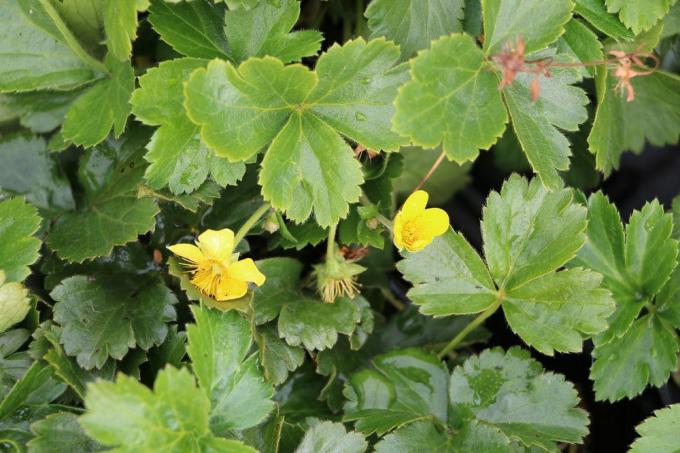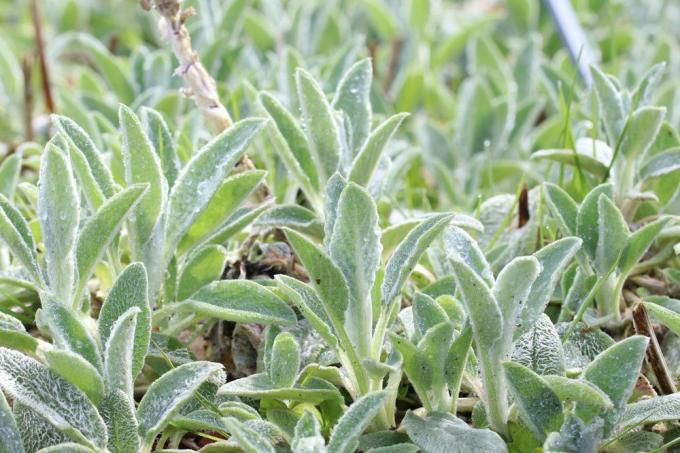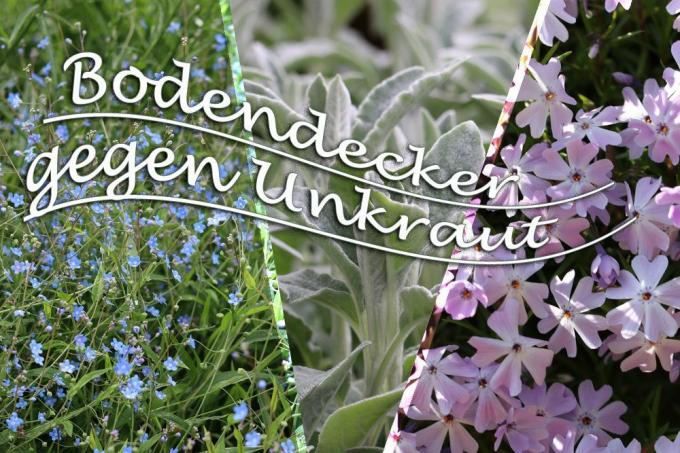
table of contents
- Ground cover in the fight against weeds
- Ground cover for sunny locations
- from B - P
- from S - W
- Ground cover for sunny to shady locations
- from F - K
- from N - W
- Ground cover for partial shade and shade
- from E - F
- from H - W
Weeds are the least popular in the garden. Because who wants to weed or hoe over and over again? There are many ways to prevent weeds from growing. One of them is the planting of ground cover. Because in most cases they are perennial, very robust, easy to care for and form dense cushions relatively quickly. So they don't give unwanted weed growth a chance. And the selection of suitable ground cover is huge.
Ground cover in the fight against weeds
There are a variety of plants with ground cover properties. These can form impenetrable carpets of plants, grow expansively and thus fight weeds. However, they not only have the property of displacing weeds, but can also make areas in the garden that are difficult to access green or bloom and protect the soil from drying out. When choosing the right ground cover, you should therefore consider their location requirements.
Ground cover for sunny locations
from B - P
Alyssum Bergsteinkraut montanum 'mountain gold'
With its intense golden yellow flower color, this evergreen perennial becomes a real eye-catcher in the sun. The Bergsteinkraut grows cushion-like and prostrate to upright and reaches heights of up to 15 cm. Its deep yellow, umbel-shaped flowers appear from April to May. You plant ten to twelve pieces per square meter.
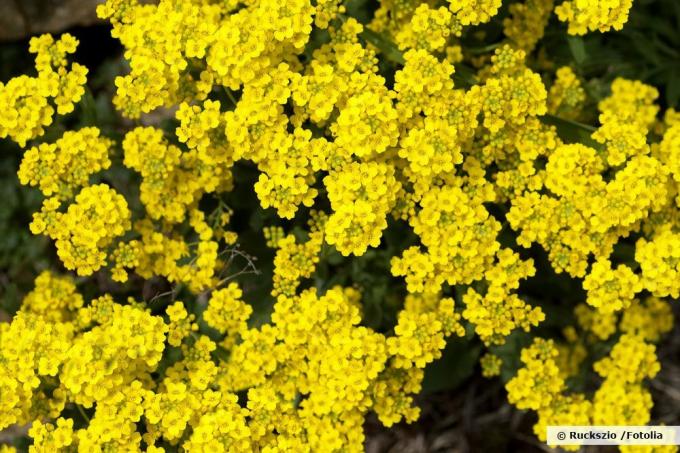
Cranberry / cranberry (Vaccinium macrocarpon)
- Cranberry related to the lingonberry
- Growth height up to 20 cm
- Easy to care for, hardy and fast growing ground cover
- Pink flowers rather inconspicuous
- Bright red, gooseberry-sized and very healthy fruits invite you to snack
- Can be harvested between mid-September and the end of October
- Plant around six to eight per square meter

Ice plant (Delosperma cooperi)
The ice plant impresses with small, radial-shaped flowers in violet-purple with an almost white center. They show up on this cushion-forming and creeping ground cover from June to August. In the midday sun, the flowers then open and reveal their intense flower color. The ice plant grows to a height of between 10 and 15 cm. Plant about 10-12 specimens per square meter.
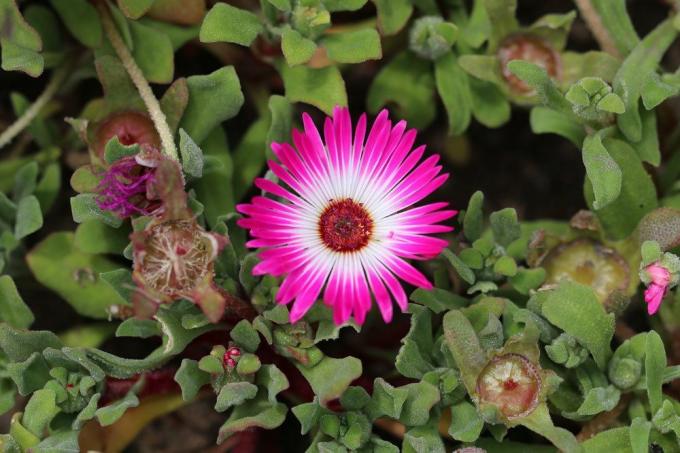
tip: The leaves are water-storing and can therefore withstand longer periods of dryness without any problems.
Upholstery phlox (Phlox subulata)
This richly blooming phlox forms wonderful cushions, sometimes also overhanging flower cushions. It spreads quickly and can therefore effectively displace weeds. Heights of growth are between 5 and 15 cm. The green, needle-like leaves are also rich in contrast. Its white, pink or light purple, chimney or purple or lavender blue flowers appear between April and June.

from S - W
Sand gorse 'Vancouver Gold' (Genista pilosa)
This light and warmth-loving gorse impresses with a strong, golden-yellow flower pile. It has no thorns, is partially hardy and only thrives on light soils. With heights of growth of 10 to 30 cm, it remains relatively low. Flowering time is from May to June. For extensive planting, five to seven plants are placed per square meter.
Sun rose (Helianthemum) 'Red Orient'
The sun rose is an attractive cushion plant for sunny borders or rock gardens. Rather inconspicuous until flowering, its blood-red bowl flowers then attract everyone's attention in May. The silvery-green foliage forms compact and well-pruning pads. The height of growth is 25 cm and the flowering period is from May to August.

Cranesbill (Geranium wallichianum) 'Rozanne' (R)
This cranesbill is very vigorous, grows like a pillow to form pillows with heights of 40 to 50 cm. Cranesbills generally convince with a long flowering time from June to October. The bowl-shaped, purple-blue and darkly veined flowers sit on long, branched stems. The green leaves are slightly hairy with a roughly serrated edge.

Wollziest (Stachys byzantina)
Wollziest belongs to the ornamental leaf shrubs. It grows crawling and like a carpet. The entire plant is hairy tomentose to woolly. It forms large cushions with heights of 30 to 40 cm. The leaves and stems are gray-white to silvery and the panicle-shaped flowers are simple and purple-pink. Flowering time is from July to August.
Ground cover for sunny to shady locations
from F - K
Finger shrub 'Gold Carpet' (Dasiphora fruticosa)
This plant grows as a small shrub and ground cover. With a height of up to 50 cm, it becomes comparatively high, grows densely bushy and prostrate. Both the gray-green, fingered leaves and the numerous golden-yellow flowers that appear from May to October are decorative. In order to control weeds effectively and to achieve widespread growth, five plants are calculated per square meter.
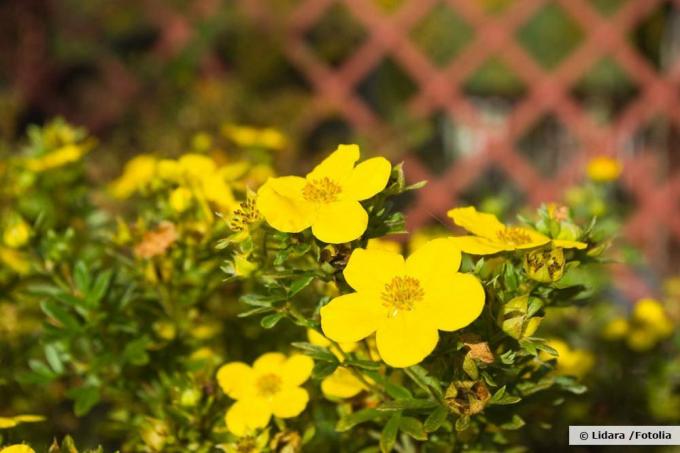
Small-leaved periwinkle (Vinca minor)
This evergreen, carpet-like ground cover is undemanding and very decorative. This is partly due to the dark green foliage, but above all to the violet-blue flowers. Because these adorn the plant from April to May. The small-leaved evergreen grows 10-15 cm in height and needs loose soil.

from N - W
Low fat male 'Compacta' (Pachysandra terminalis)
- Fat man grows compact and mat-like
- Quickly forms a lush green carpet
- Enlivens even shady areas in the garden
- Flowering time is between April and May
- Delicate white flower spikes on upright stems between the leaves
- Remains rather low with heights of 8-12 cm
- Cope well with root pressure from larger trees
- Eight to ten plants per square meter
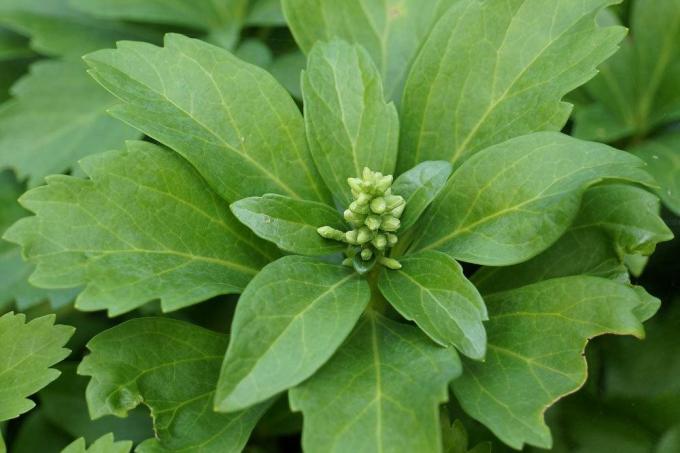
tip: The shade green is sensitive to compaction of the topsoil.
White-colored creeper 'Variegatus' (Euonymus fortunei)
The graceful loquat is not only an easy-care, slowly and creeping-growing ground cover, but also particularly decorative. This is due on the one hand to the green-white variegated leaves but also to the green-yellow flowers and the yellowish fruits. If these burst open, the intensely orange-colored seeds become visible. Six to eight specimens per square meter are recommended for heights of 30 to 50 cm.
White periwinkle (Vinca minor) 'Alba'
Another ground-covering representative that can be used to fight weeds is the white periwinkle with its brilliant white flowers. They appear in May and form a striking contrast to the dark green foliage. The plant then keeps driving new flowers into September. It becomes between 10 and 30 cm high, is very robust and easy to care for. However, the soil should be well drained and rich in humus. Eight plants per square meter are recommended.
Ground cover for partial shade and shade
from E - F
Partridge berry (Mitchella repens)
- Impresses with leaf and fruit decorations and white flowers
- Small, dark green leaves have strikingly light-colored leaf veins
- They sit on dark purple shoots
- The white flowers appear between May and June
- The spherical, dark red and edible fruits ripen from July to October
- Partridge berries grow to a height of between five and ten centimeters
- You need 12-16 plants per square meter

Woodruff (Galium odoratum)
The real woodruff is a flat, upright ground cover and reaches heights of 10 to 30 cm. It spreads quickly via runners so that weeds don't stand a chance. Both the fresh green, whorl-like and fragrant leaves and the umbel-shaped, white, star-shaped flowers enhance every shady spot. Plant 15 to 17 pieces per square meter.
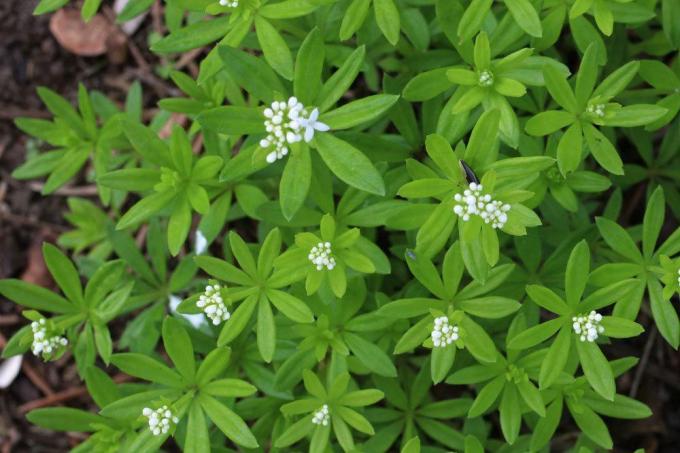
tip: Real woodruff feels particularly comfortable under large trees and at the edges of trees. The soil should be rich in humus and fresh.
Spring commemoration (Omphalodes verna)
The spring commemoration is very adaptable and robust. It forms dense stands and can quickly displace weaker neighboring plants. What is striking about this carpet-like, creeping plant are the small, bright blue flowers that sit enthroned on graceful flower stalks above the green foliage from April to May. It grows eight to twelve centimeters in height. Calculate 15-17 copies per square meter.
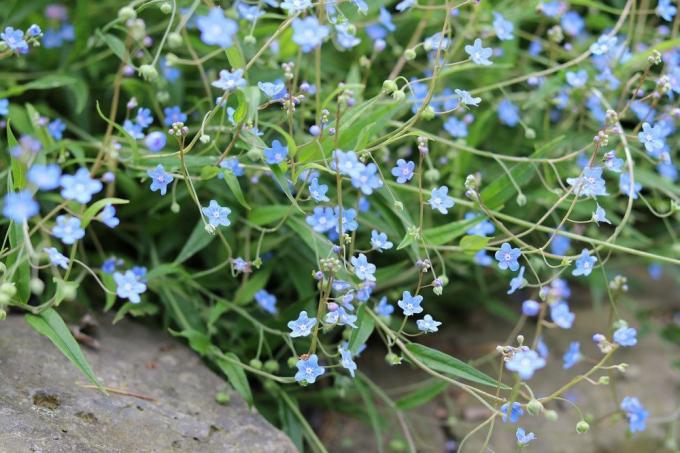
from H - W
Heart-leaved foam blossom (Tiarella cordifolia)
The heart-leaved foam blossom is also characterized by a carpet-like, flat growth and reaches a height of up to 20 cm. The lime green, heart-shaped and finely hairy leaves turn bronze to copper-red in autumn. The white, panicle-shaped flowers appear from April to May. When planting, a planting spacing of around 25 cm is recommended.
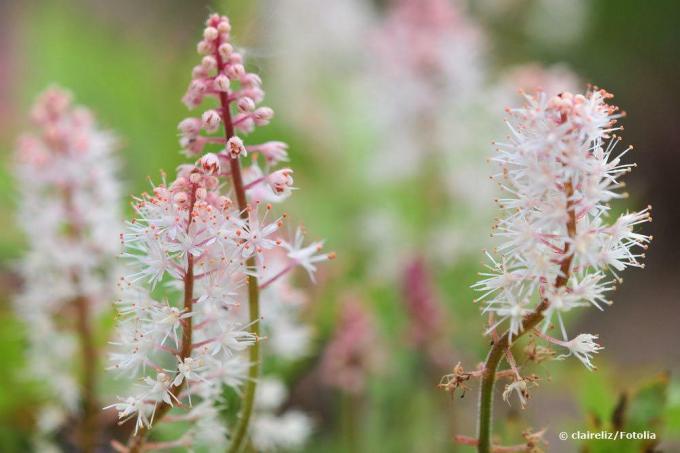
tip: The heart-leaved foam blossom looks very good next to rhododendrons and generally feels very comfortable under light trees.
Canadian hazel root (Asarum canadense)
The Canadian hazel root is particularly popular as a foliage plant. This is due to their kidney-shaped, initially light and later dark green, up to 18 cm large leaves. The cup-shaped, brown-red flowers are rather inconspicuous and remain hidden under the foliage. The hazel root grows to a height of between 15 and 20 cm, forms dense green carpets and can therefore displace weeds very well. She prefers soils with little lime.
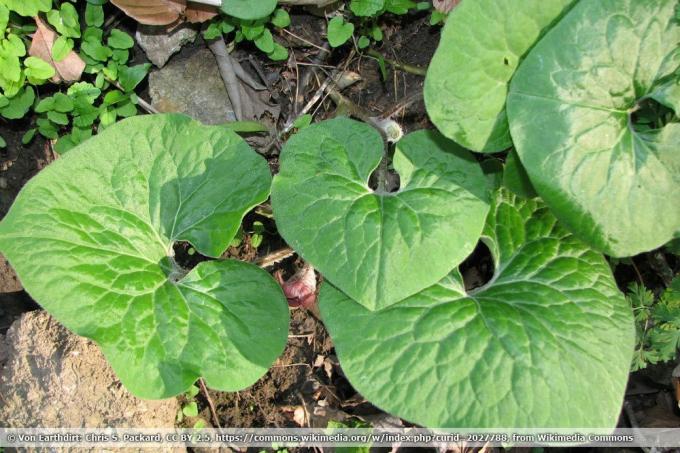
Red Carpet Berry (Gaultheria procumbens)
The red carpet berries impress with their green foliage, which turns bronze-red in winter. The light pink flowers and, last but not least, the red, aromatic fragrant berries, which are inedible are also very decorative. The carpet berry has a dense, creeping and carpet-like habit with heights of up to 20 cm. Eight plants per square meter are sufficient for extensive planting.
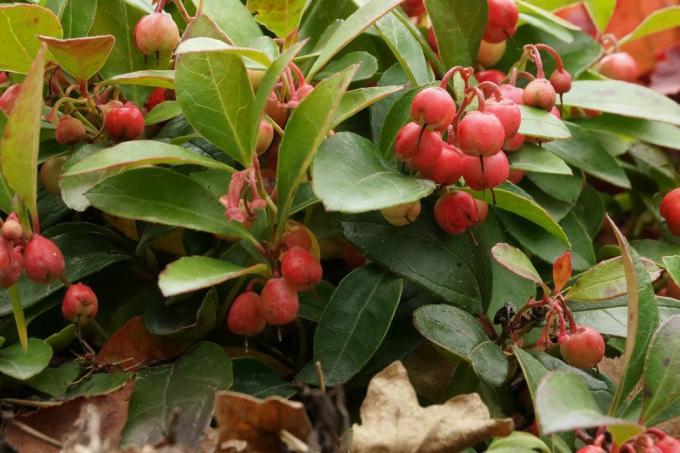
Waldsteinia / Dreiblatt Golden Strawberry (Waldsteinia ternata)
With its golden yellow, bowl-shaped flowers, this evergreen ground cover brings color to shady locations from April to May. It spreads over short runners and thus forms dense carpets. With a maximum height of 15 cm, it remains relatively small. The leaves are glossy green and, together with the bright yellow flowers, set accents that are visible from afar. You plant about eight to twelve of these perennials per square meter.
